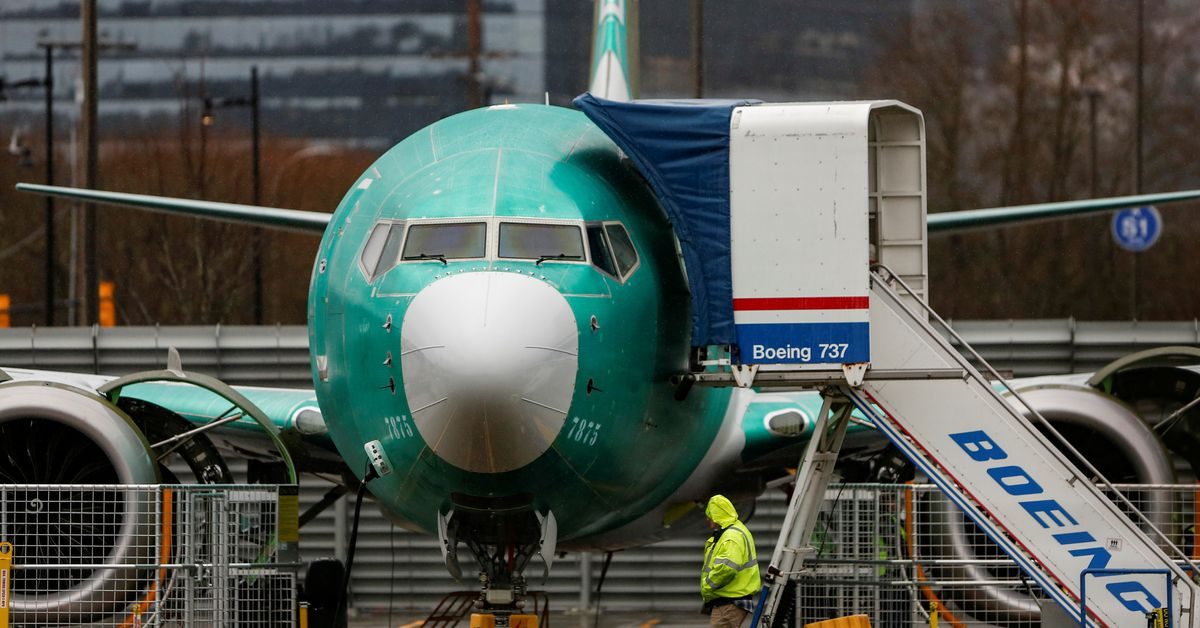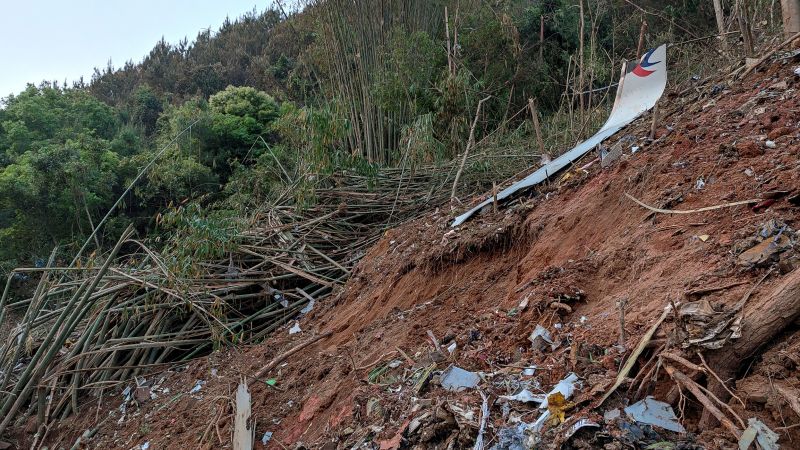- 20,685
- TenEightyOne
- TenEightyOne
I wonder if that's not the blade that failed. That could be damage from debris. Some of the results of the failure often get projected forward and sucked back in to the engine (the blade next to it looks like it's missing).
Blimey, bang on!
AV Herald- The inlet and cowling separated from the engine
- Two fan blades were fractured:
+ One fan blade was fractured near the root
+ An adjacent fan blade was fractured about mid-span
+ A portion of one blade was imbedded in the containment ring
+ The remainder of the fan blades exhibited damage to the tips and leading edges
Isn't that basically what the aviation industry does constantly for like... everything? Swap, retrofit, re-certify, re-engineer, bandaid, inspect, polish?
In this case it depends how much work is required to fit a different manufacturer's engine. The plane's overall structure can take two objects of x mass that produce n thrust at that position, that's what it's designed to do.
The nature of the connections is what matters - were all three manufacturers given an interface template to work to, or do the wing struts (and connectable services like oil, bleed air, fuel, electricals) need to be reconfigured for different type?
I have no idea, but I do wonder if the fact that these PW4000s are still in service is because it's complicated to change them for another type and the risk isn't (wasn't?) that high.
Last edited:




